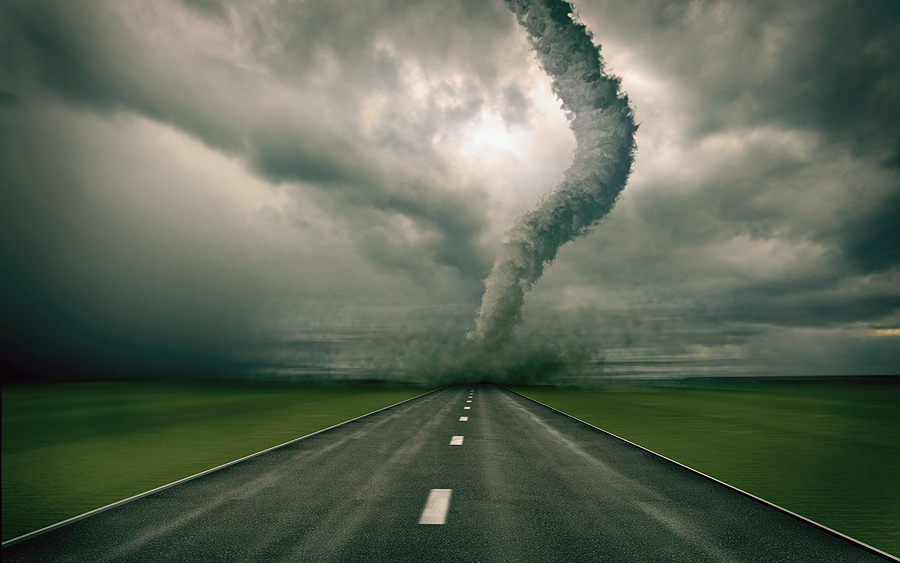One of the most significant identifying characteristics of Oklahoma City, and the region in general, is the high occurrence of tornadoes in the area. When we found out that we were moving here from Georgia, the first thing out of everyone's mouth, upon hearing the news, had something to do with the dangerous weather. Now, I might just be restating what the locals already know, but as a Georgian who grew up in cushy, more-or-less non-threatening weather conditions, I thought it might be worthwhile to talk briefly about what to do if a tornado hits when you're outside walking or cycling.
 |
| Don't be like this lady - take cover! |
First, familiarize yourself with the signs of an imminent tornado. The main things to look and listen for are:
- A dark, greenish sky
- Large, dark, low-flying, fast-moving clouds
- Large hail
- A loud roar that sounds like a freight train.
If you are out walking or cycling and you see or hear one or more of those, you should take cover until you know that the coast is clear.
The best thing to do is take shelter in a nearby building, preferably one with a solid in-ground foundation or basement. Large long-span structures like movie theatres or gymnasiums may be the easiest to get into, but their roofs are only held up by the outside walls and don't have good structural support, which means that they collapse easily - not good news for the people taking shelter inside if a tornado strikes the building. The same goes for large common areas within a building like cafeterias or auditoriums. Once inside, stay away from windows and get to the lowest, innermost level of the building. Don't use the elevator in case the power goes out, leaving you trapped inside. Ideally, you want to be able to get into a doorway or small, windowless interior room like a closet. Crouch down and protect your head and neck.
If you are outside walking when a tornado is coming and you aren't in an area where you can immediately take cover in a building, you need to find the lowest point possible and lie down face-down with your arms protecting the back of your head and neck - the ideal area would be in a ditch or similarly sunken or recessed area of ground. If you have a jacket or backpack, you can use that to cover your head and neck as well. Because tornadoes can pick up trees and other heavy objects which can then harm you if you're in the path where they're flung, you'll want to try to take cover as far away as possible from anything that can be lifted up and thrown. For this reason, I would assume that you wouldn't want to lay your bike on the ground right beside the place where you're lying down - it might be picked up by the tornado and thrown at you. Highway overpasses may seem like a good place to hide, but they're still relatively open and leave you vulnerable to flying debris.
There are also many mobile apps that you can use to receive tornado updates and alerts. Staying informed about the possibility of severe weather is very important, and if you can stay indoors, in a safe place, when the risk of tornadoes is high, that's the best course of action that you can take. Sometimes, however, you have to travel no matter what, leaving you especially vulnerable if you're using alternative forms of transportation, which is why I've covered these bases today. This is all new for me, since the biggest weather risk in most of Georgia is heatstroke from the godforsaken heat and humidity. Thanks for reading, and stay safe!


No comments:
Post a Comment